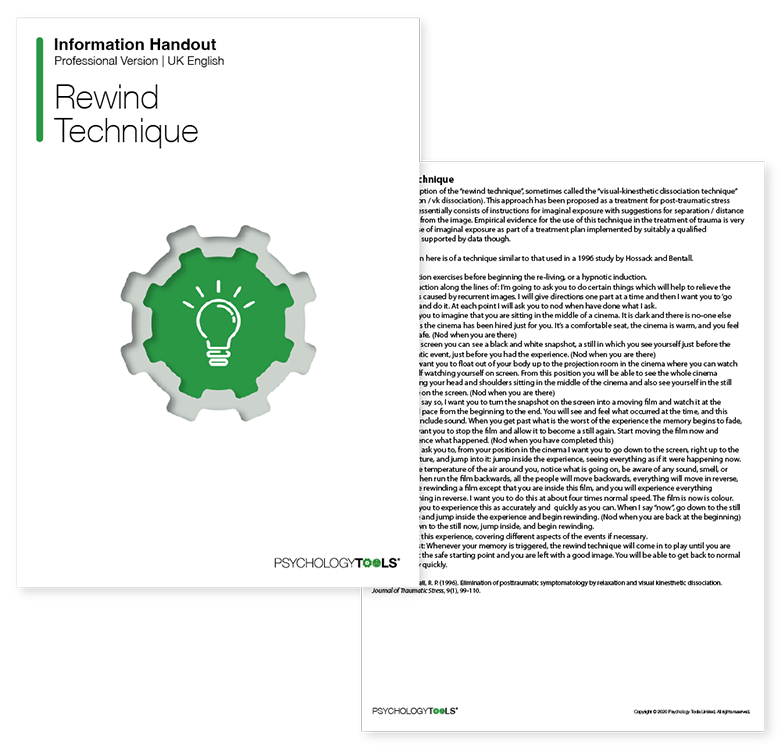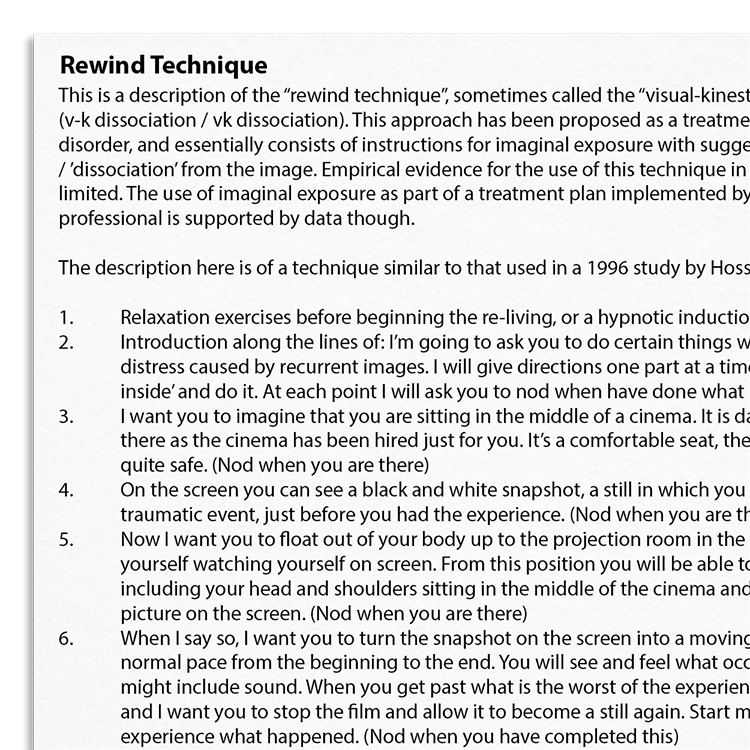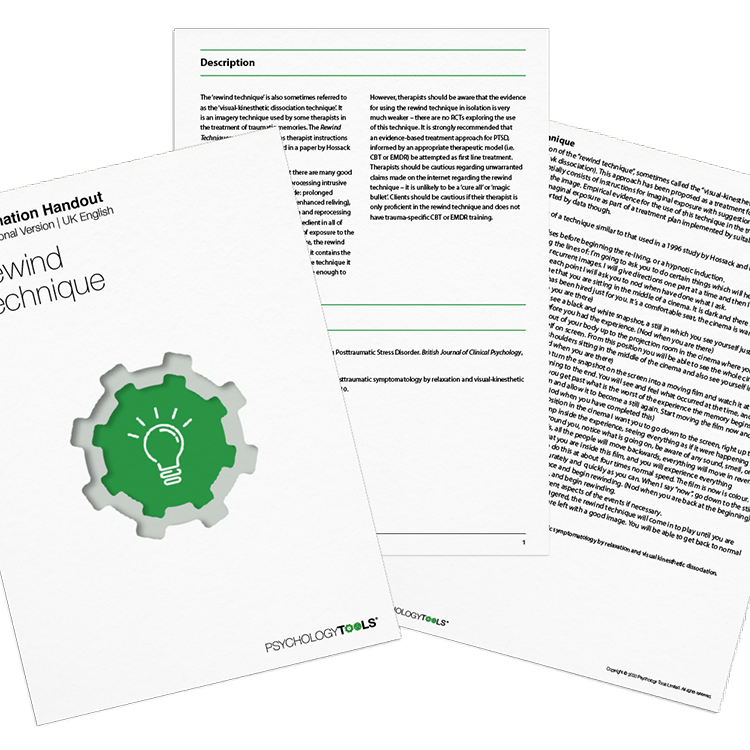Professional version
Offers theory, guidance, and prompts for mental health professionals. Downloads are in Fillable PDF format where appropriate.
The Rewind Technique is an imagery-based intervention for processing traumatic memories. Recent controlled research supports its potential as a treatment for post-traumatic stress disorder (PTSD).

Offers theory, guidance, and prompts for mental health professionals. Downloads are in Fillable PDF format where appropriate.
To use this feature you must be signed in to an active account on the Advanced or Complete plans.

The rewind technique — also referred to as the visual-kinesthetic dissociation technique — is a protocolized imaginal exposure method for treating post-traumatic stress disorder (PTSD). It involves the visualization of traumatic events from a psychologically safe distance, followed by a rapid “rewinding” of the memory. The technique is hypothesized to reduce the emotional salience of the trauma via mechanisms such as memory reconsolidation or reduced avoidance. While previously supported by observational studies, a recent randomized controlled trial (RCT) demonstrated preliminary efficacy, with large effect sizes in symptom reduction at 8 weeks post-treatment.
The Rewind Technique may be beneficial for clinicians seeking a brief PTSD intervention. This information handout:
Supporting clients in processing distressing memories.
The client is invited to imagine watching a film of their traumatic memory, beginning just before the event took place.
They observe the event as though from a safe distance — for example, visualizing the scene on a cinema screen.
After the memory plays through, the client mentally rewinds it rapidly back to the starting point.
This process may be repeated several times, depending on the client's experience and level of residual distress.
The Rewind Technique is based on principles of imaginal exposure and psychological distancing. Clients are guided to visualize their traumatic memory as if watching a film, then mentally “rewind” it in reverse. This dissociative structure may help to reduce emotional arousal while enabling engagement with avoided material (Muss, 1991).
The technique may operate through memory reconsolidation rather than extinction. Reconsolidation refers to a process where a briefly reactivated memory becomes modifiable, allowing its emotional intensity to be altered. Since Rewind uses short memory activation without prolonged exposure, this mechanism is considered plausible (Kindt & van Emmerik, 2016; Monfils & Holmes, 2018).
Recent evidence supports the clinical use of rewind, showing meaningful symptom reduction and strong potential as a time-efficient, scalable trauma intervention (Astill Wright et al., 2023). While more research is needed to confirm its mechanisms and compare it directly with established treatments, rewind offers a structured, low-disclosure approach that aligns well with trauma-focused therapy principles.

Just enter your name and email address, and we'll send you Rewind Technique (English US) straight to your inbox. You'll also receive occasional product update emails wth evidence-based tools, clinical resources, and the latest psychological research.
Working...
This site uses strictly necessary cookies to function. We do not use cookies for analytics, marketing, or tracking purposes. By clicking “OK”, you agree to the use of these essential cookies. Read our Cookie Policy